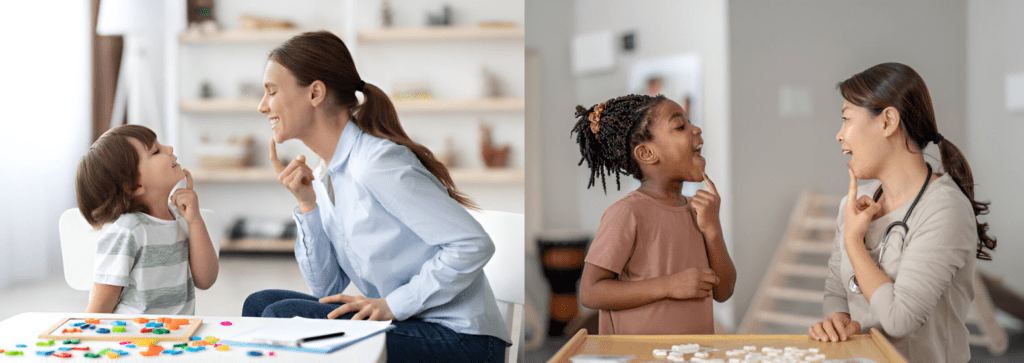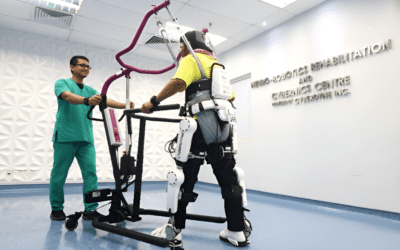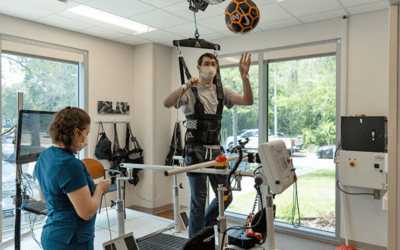Speech therapy plays a crucial role in the Neurorehabilitation of brain injury patients, addressing the communication and cognitive challenges that often arise following an injury. By employing targeted techniques and exercises, speech therapists work to improve patients’ speech production, language comprehension, and overall communication abilities. This therapy not only aids in the recovery of verbal skills but also enhances cognitive functions such as memory, attention, and problem-solving, empowering individuals to regain their voice and participate fully in daily life. In this article, we will explore how speech therapy works within the Neurorehabilitation framework, its methodologies, and the significant impact it can have on recovery outcomes.
Speech therapy is an integral component of Neurorehabilitation or Brain Injury Treatment for patients who have suffered a brain injury. It focuses on helping individuals recover their communication abilities and cognitive functions affected by the injury.

Understanding the Process of Speech Recovery After Brain Injury
1. Key Evaluations for Effective Speech Recovery After Brain Injury
Before initiating therapy, a speech-language pathologist (SLP) conducts a comprehensive assessment to understand the patient’s specific challenges. This evaluation may include:
- Communication Skills: Assessing speech clarity, language comprehension, and expressive language skills (the ability to convey thoughts).
- Cognitive-Linguistic Abilities: Evaluating memory, attention, problem-solving skills, and executive functions, which are critical for effective communication.
- Functional Communication Needs: Understanding the patient’s daily communication requirements and how the injury has impacted these abilities.
2. Personalized Treatment Plans for Speech Recovery
Based on the assessment results, the SLP develops a personalized treatment plan tailored to the patient’s unique needs and goals. This plan may encompass:
- Speech Production: Exercises aimed at improving articulation, fluency, and voice quality.
- Language Skills: Activities to enhance vocabulary, sentence structure, and overall language comprehension.
- Cognitive-communication strategies: Techniques to improve memory, attention, and reasoning that support effective communication.
3. Therapeutic Techniques and Approaches in Speech Recovery After Brain Injury
Speech therapy employs various techniques and approaches to facilitate recovery. Some common methods include:
- Rehabilitative Exercises: These exercises focus on strengthening the muscles involved in speech production (e.g., tongue, lips, vocal cords) and improving control and coordination.
- Language Drills: Structured activities that encourage word retrieval, sentence formation, and conversational skills. These may involve repetition, practice, and functional use of language in context.
- Cognitive-Linguistic Tasks: Activities designed to enhance memory, attention, and problem-solving. This may include memory games, following multi-step directions, or engaging in discussions that require critical thinking.
- Augmentative and Alternative Communication (AAC): For patients with severe speech impairments, SLPs may introduce AAC devices or strategies, such as picture boards or speech-generating devices, to facilitate communication.
4. Integration of Functional Communication
One of the primary goals of speech therapy is to promote functional communication. This involves:
- Real-Life Scenarios: Practicing communication in everyday situations, such as ordering food, engaging in conversations, or participating in group discussions, to prepare patients for real-world interactions.
- Social Communication Skills: Focusing on pragmatics, which involves understanding social cues, taking turns in conversations, and responding appropriately in various social contexts.
5. Family and Caregiver Involvement
Involving family members and caregivers in the therapy process is crucial. SLPs often:
- Educate Families: Teach family members about the patient’s communication challenges and effective strategies for interaction.
- Encourage Practice: Provide tools and activities that families can use to support the patient’s communication practice at home, fostering a supportive environment for recovery.

6. Monitoring Progress and Adjustments in Speech Recovery After Brain Injury
Speech therapy is a dynamic process that requires ongoing evaluation and adjustment. SLPs regularly monitor the patient’s progress, adjusting treatment goals and methods as necessary to ensure continuous improvement. This may include:
- Reassessing Skills: Periodic re-evaluations to track progress in communication and cognitive abilities.
- Feedback Loops: Gathering feedback from patients and their families to understand what strategies are effective and where adjustments may be needed.
7. Long-Term Support and Transition
Even after formal therapy sessions decrease, SLPs may provide resources and strategies for long-term support. This could include:
- Maintenance Programs: Suggested exercises or activities that patients can continue independently to sustain progress.
- Community Resources: Referrals to support groups or community programs that encourage ongoing communication practice and social engagement.
Conclusion
In summary, speech therapy plays a vital role in the Neurorehabilitation of brain injury patients by addressing the multifaceted communication and cognitive challenges they face. Through personalized treatment plans, a variety of therapeutic techniques, and a focus on functional communication, SLPs empower patients to regain their voice and rebuild their confidence in social interactions. The collaborative approach involving families and continuous monitoring of progress further enhances the effectiveness of therapy, contributing significantly to improved recovery outcomes and quality of life.



